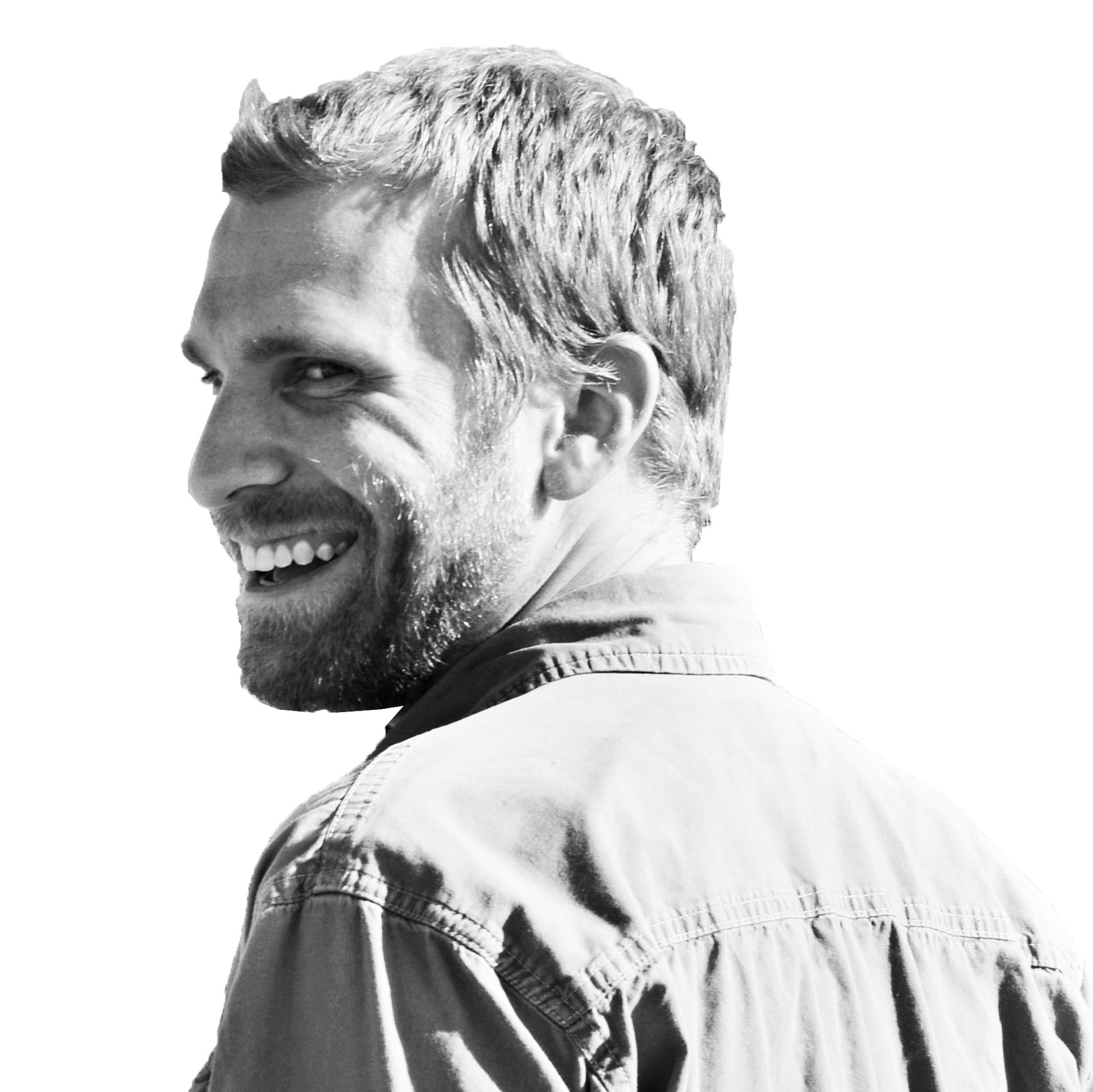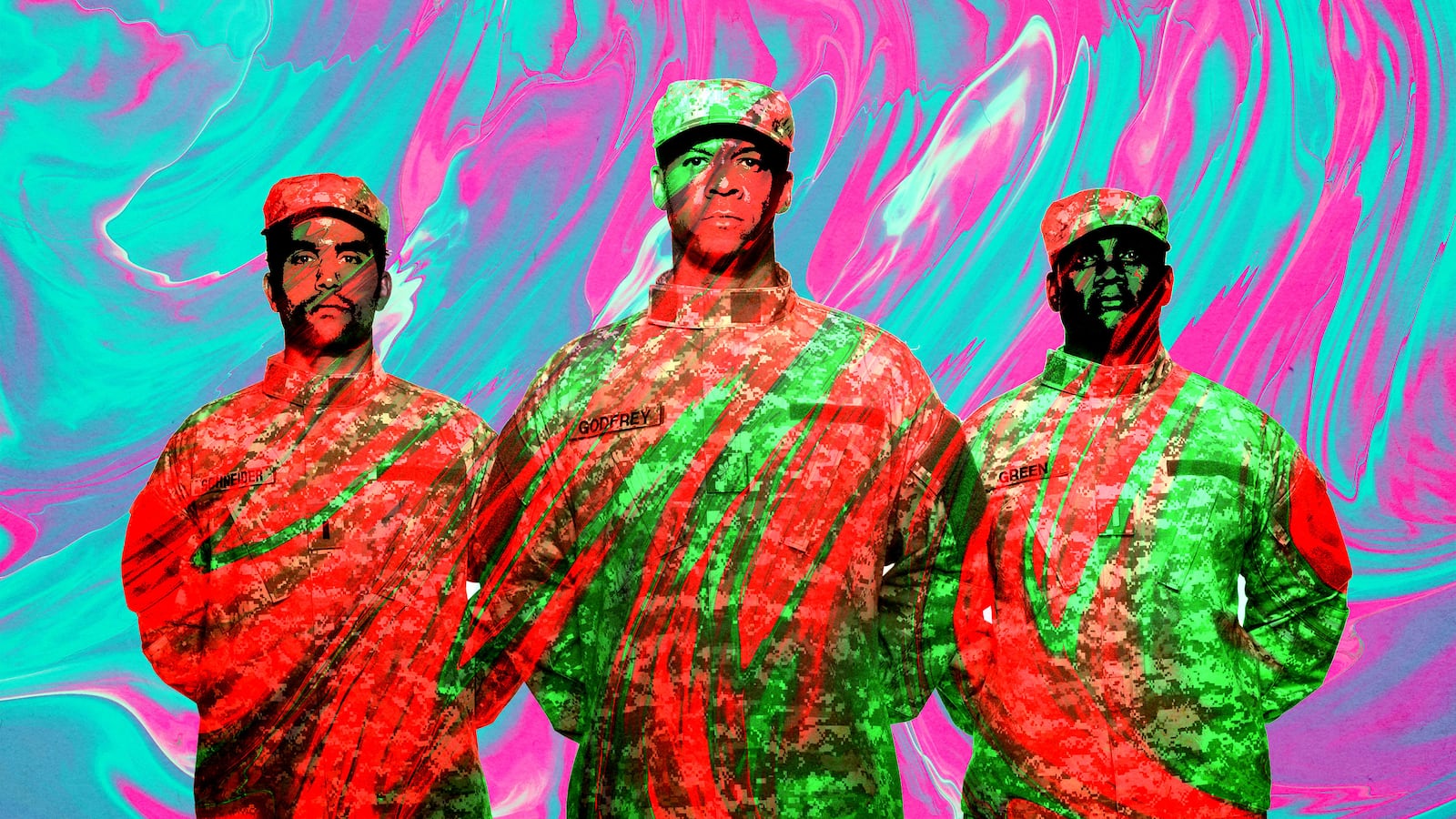Can LSD help America win wars? A scholarly article in the February issue of Marine Corps Gazette—a professional journal published by the Marine Corps Association—suggests exactly that.
Written by Maj. Emre Albayrak, the paper makes the case that the military should explore the “innovative cognitive benefits gained through microdosing with psychedelics,” something that scientists, Silicon Valley executives and biohackers are already harnessing.
Albayrak, an active duty officer who has served with Marine recon and intel units, believes intelligence analysts could benefit from entering a mental “flow” state to help them think more creatively—and that LSD might help troops get there faster. “Flow states have been entered with microdosing, and research supports the idea that a cognitive advantage can be gained,” he writes. “Through well-designed experimentation and the use of psychedelics in intelligence analysis, an advantage may be gained over our adversaries.”
Citing Apple founder Steve Jobs and several Nobel prize-winning scientists as cases where LSD aided innovation, Albayrak proposes that the Marine Corps select volunteers and put them through a series of tests. “Following microdosing, the groups will be tasked with competing in the popular Asian strategy game Go, which can be utilized to assess cognitive expertise and functions such as attention, working memory, visuospatial processing, and decision making,” he suggests.
It’s a bold proposal and, as Albayrak freely acknowledges, an illegal one. “It is obvious this will be in direct contravention of the Marine Corps substance abuse policy, which is why these Marines will have to be very carefully screened and selected,” he writes. “The volunteers will need drug waivers entered into their medical files and must be subject to additional weekly drug screenings to ensure they are only ingesting substances prescribed in the study.”
The Marine Corps Association declined multiple requests for comment. While Marines dropping acid to fight America’s enemies may sound crazy, the proposal isn’t as outlandish as you think. “Historically soldiers have used drugs, supervised or unsupervised, and they’re going to continue to use drugs whether it’s to build confidence or improve their performance or give them that psychological edge,” says Sean Cavanagh, a military analyst and Canadian infantry veteran who has studied military applications of drugs.
Some academics contend that the legendary Viking Berserkers, who were said to act and fight like animals, may have achieved their trancelike fighting states through the aid of hallucinogenic mushrooms. Tatar and Zulu warriors also may have used a variety of hallucinogenic plants and fungi to induce trances and make themselves resistant to pain. But the best documented psychedelic warriors are Siberian tribesman.
“Because in Siberian inter-tribal trade dry fungi were very expensive, only the wealthy could afford them,” says Lukasz Kamienski, an associate professor at the Jagiellonian University in Krakow and author of Shooting Up: A History of Drugs in Warfare. But Siberians eventually realized the urine of a person who had eaten the fly agaric mushrooms retained the hallucinogenic effects and could be passed on to as many as five other men.
Some Siberians began collecting and drinking the intoxicated urine. “[It was] a habit that both the Russians and Westerners found highly disgusting,” Kamienski explains. “[But] urine drinking was popular among the Siberian warriors as muscimol significantly enhanced their combat performance. Legends and tales say that the tribes that consumed Amanita muscaria produced fierce and brutal ‘mushroom warriors.’”
But psychedelics play a relatively small role in the history of drug-fueled warfare. Combatants have more often used stimulants for enhanced energy and aggression on the battlefield. During World War I both sides liberally employed cocaine to keep soldiers and pilots awake for long stretches. During World War II, the German military issued so many amphetamines that tankers began calling them panzerschokolade (panzer chocolates.)
Militaries make a distinction between “go pills” and “no-go pills.” Go pills increase alertness and energy on the job while no-go pills are supposed to help troops rest and unwind between missions. Psychedelics tend to fall under the latter—whether officially or not. A 1971 Department of Defense study found that 31 percent of servicemembers had used psychedelics, 51 percent had smoked marijuana and 28 percent had used hard drugs.
“A military program can potentially make it safer than what you’re getting on the street,” says Cavanagh. “So that’s another way to look at it—people are going to do it anyway. A person who goes to a rave has no idea what they’re ingesting. A soldier that’s being given performance enhancing drugs from a physician is certainly in a better place than that person at the rave.”
Cavanagh points out that servicemembers still constantly use drugs on the job whether they think about it or not. They chug caffeinated drinks for energy boosts. Nicotine gives short-term battlefield benefits as it calms nerves and increases alertness. And Albayrak’s proposal notes that off-label use of drugs like Adderall and Ritalin aren’t uncommon in the U.S. military.
“Unlike amphetamines, psychedelic use does not lead to physical dependence. Overdosing from the direct pharmacological action of LSD in humans is not a salient fatality concern,” he argues. “LSD and mushrooms demonstrate the least amount of harm to users and others amongst drugs, and LSD does not remain in the spinal fluid or spinal cord, as it was once believed.”
But the U.S. government has a checkered history with LSD. During the Cold War, American leaders saw the drug not as a tool to open their minds, but as a weapon to break the minds of America’s enemies.
In the 1950s the CIA launched MKUltra, a secret program to explore the viability of mind control that extensively used LSD, sometimes in conjunction with torture. CIA officers conducted countless tests on American and Canadian citizens, often without their knowledge or consent.
Among the most infamous cases was Frank Olson, a chemical weapons scientist who was unwittingly dosed with LSD by his CIA supervisor and suffered a nervous breakdown. He fell to his death from a 10th-story New York City hotel room nine days later. Olson’s story would later become the focus of the Netflix miniseries Wormwood.
Meanwhile, the U.S. Army saw the potential of using LSD-induced euphoria to peacefully subdue their enemies. Maj. Gen. William Creasy, a chemical warfare officer, was particularly enthralled with the potential of psychochemical weapons and promoted the concept of “war without casualties.”
“The idea of dispersing a dense cloud of immobilizing compounds over the enemy to paralyze even the best trained units without killing them seemed extremely attractive,” Kamienski explains. “[But] all of the U.S. Army efforts proved unsuccessful—no fully effective hallucinogenic or psychedelic non-lethal weapon has been invented.”
But CIA and Army research often overlapped. At the Edgewood Arsenal in Maryland Dr. Van Murray Sim oversaw the secretive Material Testing Program EA 1729. Sim was infamous for his self-experimentation with drugs—sometimes supervised, sometimes not. He used LSD, mushrooms, synthetic marijuana and was the first human test subject for the nerve agent VX.
In 1960, Sim briefed Army brass on plans for overseas LSD trials, leading to a series of tests in Europe and Asia over the next three years. An Army team conducted tests on unwitting subjects abroad, including friendly intelligence assets, to see if they may be double agents. They even conducted tests on Viet Cong prisoners without the knowledge of the Joint Chiefs of Staff.
At one point the team performed tests on a black U.S. Army private stationed in France named James Thornwell, who had aroused his superiors’ suspicions. Sim’s team kidnapped and drugged Thornwell, holding him for months while keeping him on high doses of LSD. He eventually confessed to being a spy.
However, the Army’s own documentation acknowledges Thornwell’s innocence. Lt. Col. William Jacobson, an intelligence officer on the team, noted “satisfactory evidence of subject’s claim of innocence in regard to espionage intent” while also arguing that future tests should focus on “real subjects of actual crimes for research and operational purposes.”
No one told Thornwell about the LSD or that they knew he was innocent. He spent years living in paranoid isolation, learning the truth years later. In 1977 Thornwell told the San Francisco Examiner “at the time my head felt as large as the universe. My brain felt like it was exploding.”
That dark history looms over any new potential military LSD research. But Cavanagh says Albayrak’s emphasis on strong oversight and microdoses rather than intensive use sets the proposal apart. Still, he has questions. “What is an intelligence unit that’s using psychedelics going to look like? Are they going to be locked away in a room problem solving and breaking codes or are they going to be on a base with a sidearm?”
U.S. troops have come under scrutiny for using drugs like cocaine and steroids on the job. In the weeks leading up to the 2012 Kandahar Massacre, Staff Sgt. Robert Bales was freely mixing steroids, booze and sleeping pills and said he was on “autopilot” before he wandered off a special operations base he was supposed to be guarding and murdered 11 Afghan civilians.
Last year, the Air Force disciplined 14 airmen charged with guarding a nuclear weapons facility with using and/or distributing LSD—though none were accused of using on duty. Some were also using cocaine and ecstasy.
Albayrak’s paper notes, “it must be understood that this is neither a sideways attempt to allow Marines to ingest illicit substances nor to be mistaken as a half-baked attempt to recreate previously failed paranormal experiments such as the Army’s The Men Who Stare at Goats.”
Cavanagh says that any program needs to look ahead to possible long-term consequences and take into account that drugs affect every individual differently.
“What happens when we have the intelligence analyst who feels he or she can’t think without their LSD and then they start scoring it from the street?” he asks. “If you’re in a psychedelic intelligence unit for two years and you’re taking a micro dose every three days, at what point does your body adjust and need more or does it become no longer useful? And what happens to a person after their military career is over and they feel they can’t think without dosing? Those are the kind of questions I’m asking about what is a psychedelic intelligence unit going to look like.”
However, Cavanagh adds that those concerns can be addressed through comprehensive, ethical testing. “If they base it in science—and these cognitive tests that he wants to do seem reasonable—I think they’ll find answers one way or the other about whether this will help their people perform or not.”
But Kamienski thinks the way forward for mind-altering techniques is high-tech. “The future does not seem to belong to a new generation of drugs but to nanoengineering,” he argues. He points to Halo Neuroscience, a San Francisco-based company that offers a special headset for athletes. “Stimulating particular areas of the brain allows for various forms of treatment, but also enhancement,” he explains.
Halo has tested its technology on skiers and snowboarders, and last year SEAL Team 6 began testing it. “It was found that servicemen can train faster for the same results or train at the same level for much better outcomes—be it operating weapons or movement-based combat skills,” says Kamienski. “Imagine a future soldier wearing a helmet zapping her brain. Instead of taking ‘go pills’ she could switch on neurostimulation and be awake and alert for up to 60 hours.”
Cavanagh has misgivings about just how far commanders can—or should—push people whether it’s through drugs or technology. “It’s great to keep your guy awake for 40 hours, but when he can’t distinguish between friend and foe you have a problem.”
Those concerns haven’t stopped other militaries from pushing their own troops to the limits. In 2011, the Chinese military unveiled a new anti-sleep drug called “Night Eagle” that can supposedly keep a soldier awake and alert for as long as 72 hours.
“Combat does not reward fair play, and World Anti-Doping Agency doping control officers are not taking samples after missions to ban Marines from ‘competition.’ Our enemies are already seeking an edge over us through [performance enhancing drugs] and nootropics,” Albayrak argues in his proposal. “War is not a game, and meeting your enemy on equal footing is a fool’s errand.”








